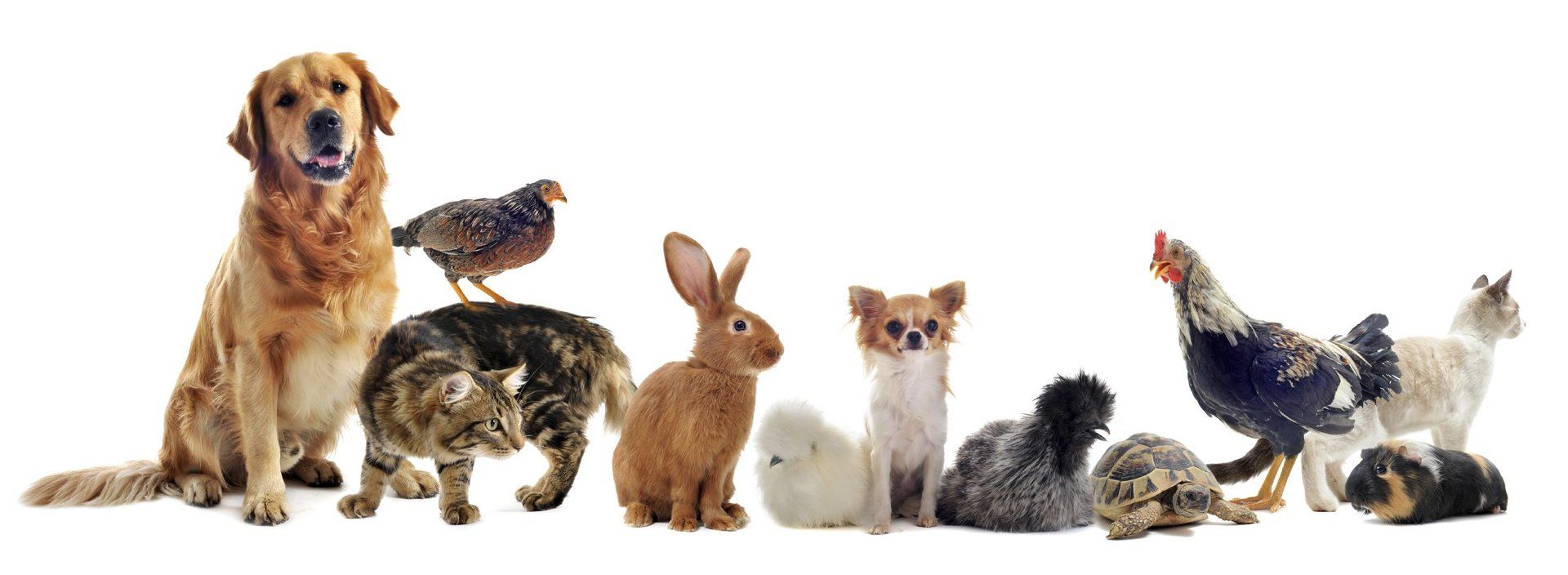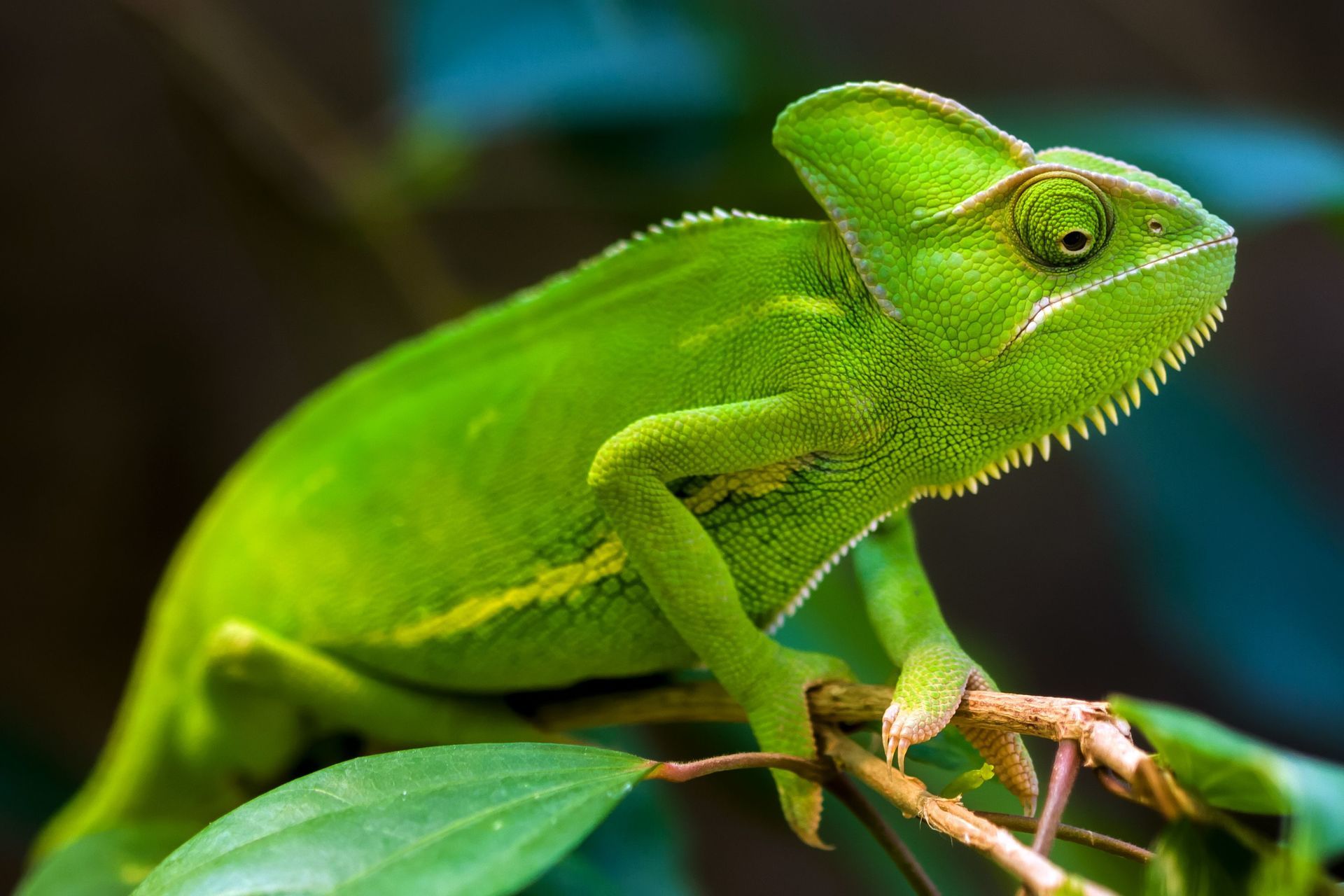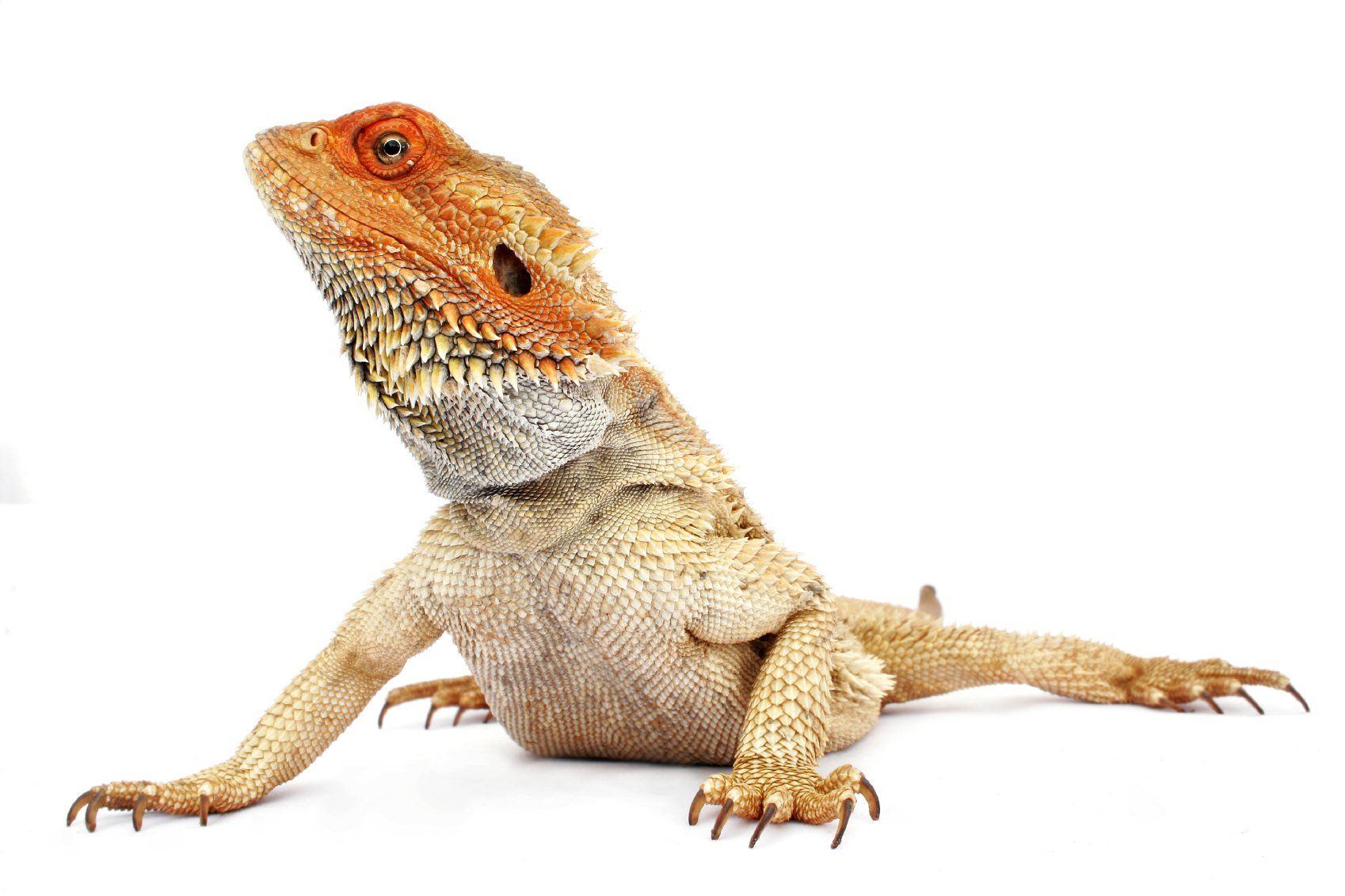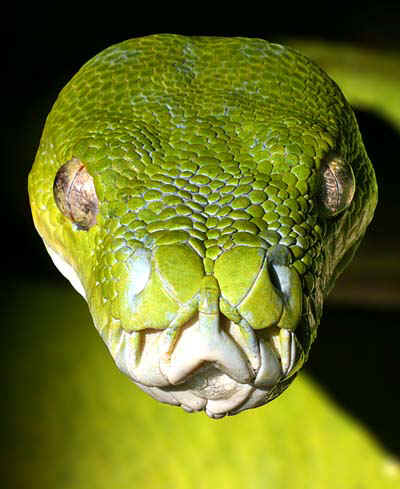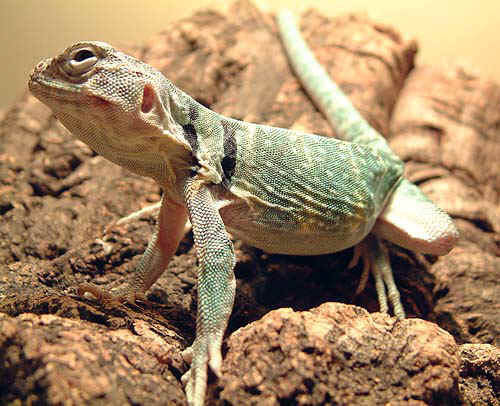Reptile - Environment
One of the major differences between reptiles as pets and normal domestic animals like cats and dogs is that most will have environmental requirements which cannot be fulfilled by living free in a normal domestic environment so most usually spend most of their time in a controlled environment - usually some sort of vivarium.
I have a client who breeds exotic types of fish and I remember during a discussion with him one day he said to me: "I never tell people I keep fish. I always tell people that I keep water and if you keep the water right the fish will look after themselves.".
There is a lot to be said for this approach with reptiles. Many of the problems seen in reptiles are due to problems with their environment and nutrition and if you get these right then your reptile will thrive. If the environment or nutrition are wrong then whatever problems you encounter are likely to keep recurring.
I am not going to provide a stack of "care sheets" for all the different domestic reptiles. There is a wealth of good information already available on the internet. You could start with the Melissa Kaplan Herp Care Site at: www.anapsid.org which has a lot of good information but there are many others.
Find out about the natural history of your reptile- where it lives, its habitat, its diet etc. because these facts will also tell you a lot about the environment you are seeking to recreate in the vivarium.
For veterinary surgeons, determining the environmental conditions needs to be an early and thorough part of your history taking. Ideally you would want to see the set up but this is impractical in most cases. However, it is worth encouraging people to bring in pictures taken on digital cameras or mobile phones to use as a basis for discussion of the vivarium set-up.
FACTORS TO CONSIDER ARE:
TEMPERATURE - is the first and most obvious factor.
Reptiles are poikilotherms, popularly known as cold blooded. This means that they cannot regulate their body temperature physiologically but they can regulate it remarkably well behaviourally providing that they have sufficient range of temperature within their habitat to do so. This means that most require a source of radiant heat (basking spot) and cooler areas elsewhere. Heat sources must be regulated by thermostats and checked independently by a max/min thermometer. Temperature requirements vary but usually are about 75-85F ambient with a basking spot about 90F but check individual care sheets for this.
Desert reptiles such as collared lizards (below) frequently require higher temperatures.
Collared lizards come from desert areas of America and require high environmental temperatures. Note the wastage of the limb muscles and the skin folds over the thorax due to poor body weight and dehydration. The ambient temperature in the vivarium was too low for this animal.
A common problem is frequently reported in snakes- many people report that their snakes stop feeding in the winter despite not changing the thermostat settings. This may be a natural response to decreasing photoperiod but it is sometimes a temperature problem; when the central heating goes off at night, the room in which the vivarium sits can get so cold that the heating sources cannot provide enough heat to keep the temperature high enough in the habitat so the snakes get chilled at night. People frequently report that the snakes "feel cold" in the morning. This regular chilling will send snakes into a state of "brumation"- a sort of semi-hibernation and they stop eating. This is often not too much problem since many larger snakes have a tendency to obesity anyway but poor temperature regulation does render many more sensitive species vulnerable to respiratory infections.
The solution is to check the night time temperature with a max/min thermometer and if the vivarium is getting chilled at night, to provide extra heat sources.
HUMIDITY - The wrong levels of humidity can lead to problems especially respiratory and skin problems. The humidity needs to reflect the environment that the animal normally inhabits- rain forest species such as the greentree python need humid environment and the atmosphere will need regular misting. Desert species obviously need it dry.
LIGHTING - There needs to be a fairly normal circadian rhythm. Much more important is to establish whether or not the species requires UV light for vitamin D manufacture.
In general: Snakes do not; Chelonians do; Diurnal lizards do; Nocturnal lizards do not.
With lizards, correct species identification is obviously important to establish if they are diurnal or nocturnal but a useful guide can be seen in the eye; nocturnal lizards usually have a slit pupil (like a cat), diurnal lizards usually have a round one.
Above - Crested gecko, the cat-like slit pupil indicates that this is a nocturnal species.
Below - Rhinoceros iguana, the round pupil indicates it is diurnal.
A lack of sufficient UV light is a common cause of MBD- metabolic bone disease (see under nutrition) It is not enough that a UV light is present. A common problem is that animals cannot get close enough to the UV source for long enough- they need to be able to get within 3 or 4 inches of the source. Sometimes the UV source is too inaccessable e.g. at the top of the vivarium. Other problems can occur where several lizards live together- dominant individuals tend to hog the UV source for much of the day and subordinate individuals do not get enough time near to the bulb. You need to check the position of the UV source in the vivarium, that it has been changed frequently enough and that there is enough access for all the animals in the vivarium.
The best possible source of UV is the sun and diurnal lizards and chelonians will benefit enormously if allowed to bask in natural sunshine for an hour 3 or 4 times a week during summer months.
SUBSTRATE & FURNITURE - Substrate is also an important consideration. Unsuitable substrates may be ingested and cause obstructions; dusty substrates can cause respiratory problems. Cage furniture is also important- green snakes need perches to hang from.
WATER SUPPLY - Some species can access water from open bowls. Others like chameleon will only take water droplets off leaves so regular misting is important.
SOCIAL GROUPINGS - Many reptiles live a solitary life and pair up only for mating. Some will live in a "harem" type group (1 male with 2 or 3 females). Most males are territorial and cannot be kept together. Keeping reptiles in unsuitable groups will lead to stress, illness and fighting.
The popular leopard gecko likes a solitary life.
HIDE AREAS - Hide areas are particularly important for many snakes. Snakes like the Royal Python who normally ambush prey will often not feed unless provided with enough hide areas in which they will feel safe. Snakes will often eat huge meals which will take days, weeks or even months to digest. During this period, they are vulnerable to predators and hence they will not eat if they have no safe hide to retire to to digest their meal. Such hide areas must also be in a warm part of the vivarium, the effectiveness of digestive enzymes depends on temperature.
Hide areas are also important for skin shedding and egg laying- lack of suitable areas will cause problems with these processes (see later).
Above - The Burmese python. These animals can grow to many feet in length. at this size they present significant problems in housing, zoos and animal rescue centres are often overwhelmed by these snakes as they get too big to keep. People should give serious consideration before taking on these giants.
One of the major differences between reptiles as pets and normal domestic animals like cats and dogs is that most will have environmental requirements which cannot be fulfilled by living free in a normal domestic environment so most usually spend most of their time in a controlled environment - usually some sort of vivarium.
I have a client who breeds exotic types of fish and I remember during a discussion with him one day he said to me: "I never tell people I keep fish. I always tell people that I keep water and if you keep the water right the fish will look after themselves.".
There is a lot to be said for this approach with reptiles. Many of the problems seen in reptiles are due to problems with their environment and nutrition and if you get these right then your reptile will thrive. If the environment or nutrition are wrong then whatever problems you encounter are likely to keep recurring.
I am not going to provide a stack of "care sheets" for all the different domestic reptiles. There is a wealth of good information already available on the internet. You could start with the Melissa Kaplan Herp Care Site at: www.anapsid.org which has a lot of good information but there are many others.
Find out about the natural history of your reptile- where it lives, its habitat, its diet etc. because these facts will also tell you a lot about the environment you are seeking to recreate in the vivarium.
For veterinary surgeons, determining the environmental conditions needs to be an early and thorough part of your history taking. Ideally you would want to see the set up but this is impractical in most cases. However, it is worth encouraging people to bring in pictures taken on digital cameras or mobile phones to use as a basis for discussion of the vivarium set-up.
FACTORS TO CONSIDER ARE:
TEMPERATURE - is the first and most obvious factor.
Reptiles are poikilotherms, popularly known as cold blooded. This means that they cannot regulate their body temperature physiologically but they can regulate it remarkably well behaviourally providing that they have sufficient range of temperature within their habitat to do so. This means that most require a source of radiant heat (basking spot) and cooler areas elsewhere. Heat sources must be regulated by thermostats and checked independently by a max/min thermometer. Temperature requirements vary but usually are about 75-85F ambient with a basking spot about 90F but check individual care sheets for this.
Desert reptiles such as collared lizards (below) frequently require higher temperatures.
Collared lizards come from desert areas of America and require high environmental temperatures. Note the wastage of the limb muscles and the skin folds over the thorax due to poor body weight and dehydration. The ambient temperature in the vivarium was too low for this animal.
A common problem is frequently reported in snakes- many people report that their snakes stop feeding in the winter despite not changing the thermostat settings. This may be a natural response to decreasing photoperiod but it is sometimes a temperature problem; when the central heating goes off at night, the room in which the vivarium sits can get so cold that the heating sources cannot provide enough heat to keep the temperature high enough in the habitat so the snakes get chilled at night. People frequently report that the snakes "feel cold" in the morning. This regular chilling will send snakes into a state of "brumation"- a sort of semi-hibernation and they stop eating. This is often not too much problem since many larger snakes have a tendency to obesity anyway but poor temperature regulation does render many more sensitive species vulnerable to respiratory infections.
The solution is to check the night time temperature with a max/min thermometer and if the vivarium is getting chilled at night, to provide extra heat sources.
HUMIDITY - The wrong levels of humidity can lead to problems especially respiratory and skin problems. The humidity needs to reflect the environment that the animal normally inhabits- rain forest species such as the greentree python need humid environment and the atmosphere will need regular misting. Desert species obviously need it dry.
LIGHTING - There needs to be a fairly normal circadian rhythm. Much more important is to establish whether or not the species requires UV light for vitamin D manufacture.
In general: Snakes do not; Chelonians do; Diurnal lizards do; Nocturnal lizards do not.
With lizards, correct species identification is obviously important to establish if they are diurnal or nocturnal but a useful guide can be seen in the eye; nocturnal lizards usually have a slit pupil (like a cat), diurnal lizards usually have a round one.
Above - Crested gecko, the cat-like slit pupil indicates that this is a nocturnal species.
Below - Rhinoceros iguana, the round pupil indicates it is diurnal.
A lack of sufficient UV light is a common cause of MBD- metabolic bone disease (see under nutrition) It is not enough that a UV light is present. A common problem is that animals cannot get close enough to the UV source for long enough- they need to be able to get within 3 or 4 inches of the source. Sometimes the UV source is too inaccessable e.g. at the top of the vivarium. Other problems can occur where several lizards live together- dominant individuals tend to hog the UV source for much of the day and subordinate individuals do not get enough time near to the bulb. You need to check the position of the UV source in the vivarium, that it has been changed frequently enough and that there is enough access for all the animals in the vivarium.
The best possible source of UV is the sun and diurnal lizards and chelonians will benefit enormously if allowed to bask in natural sunshine for an hour 3 or 4 times a week during summer months.
SUBSTRATE & FURNITURE - Substrate is also an important consideration. Unsuitable substrates may be ingested and cause obstructions; dusty substrates can cause respiratory problems. Cage furniture is also important- green snakes need perches to hang from.
WATER SUPPLY - Some species can access water from open bowls. Others like chameleon will only take water droplets off leaves so regular misting is important.
SOCIAL GROUPINGS - Many reptiles live a solitary life and pair up only for mating. Some will live in a "harem" type group (1 male with 2 or 3 females). Most males are territorial and cannot be kept together. Keeping reptiles in unsuitable groups will lead to stress, illness and fighting.
The popular leopard gecko likes a solitary life.
HIDE AREAS - Hide areas are particularly important for many snakes. Snakes like the Royal Python who normally ambush prey will often not feed unless provided with enough hide areas in which they will feel safe. Snakes will often eat huge meals which will take days, weeks or even months to digest. During this period, they are vulnerable to predators and hence they will not eat if they have no safe hide to retire to to digest their meal. Such hide areas must also be in a warm part of the vivarium, the effectiveness of digestive enzymes depends on temperature.
Hide areas are also important for skin shedding and egg laying- lack of suitable areas will cause problems with these processes (see later).
Above - The Burmese python. These animals can grow to many feet in length. at this size they present significant problems in housing, zoos and animal rescue centres are often overwhelmed by these snakes as they get too big to keep. People should give serious consideration before taking on these giants.
